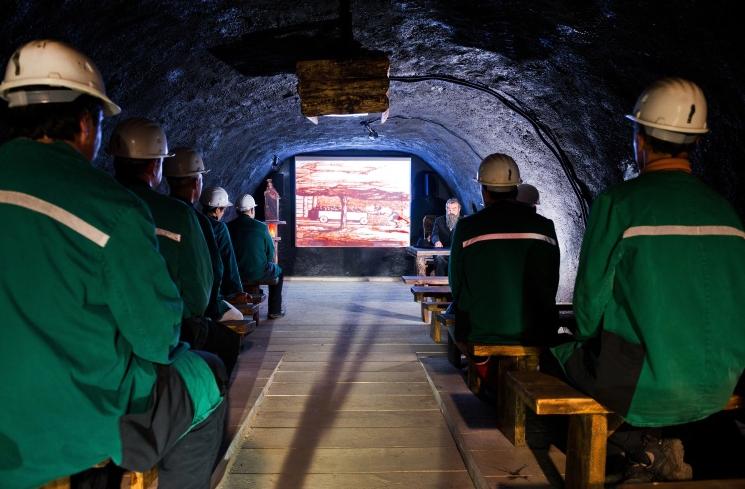
Slovenia has an abundance of small museums, but the Velenje Coalmining museum is unlike any other. Even its location – some 200 meters beneath the surface of the earth – is unique.
The entrance to the underground portion of the museum is already impressive. Visitors make their way down a disused shaft using a 140-year-old steam-powered elevator. Deep beneath the surface, the museum collection extends over one kilometer, and several dioramas bring the everyday life of miners to life.
As they make their way through the tunnel, visitors are introduced to the history of the mine. The first excavations in the area took place in the 1870s. In 1893, thirty-two miners were killed in an accident caused by flammable gasses, but the tragedy did not stop the growth of the mine. It ultimately became one of the biggest employers in this part of Slovenia and put Velenje on the map as an industrial center. And it was in the Velenje mine that a special excavation technique was developed; in one part of the museum, visitors learn how this technique made the Velenje mine one of the most modern ones of its kind and was eventually adopted around the world.
Elsewhere, the exhibits focus on the daily routine of mineworkers, and feature reconstructions of locker rooms and even a mockup of a typical miner’s apartment from the 1930. The museum also examines less tangible elements of the local coalmining heritage, with a special emphasis on traditional miners’ values, such as solidarity and the willingness to risk their own lives to help others.
The museum tunnel is linked to tunnels of the still-active Velenje coal mine. Despite the changes in technology and the introduction of modern machinery, the difficult an often-dangerous work of extracting coal goes on – much as it has since the late 19th century.

































































